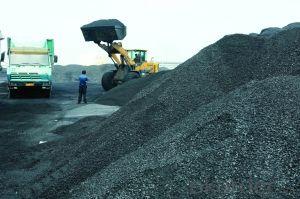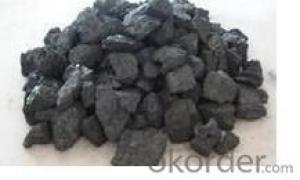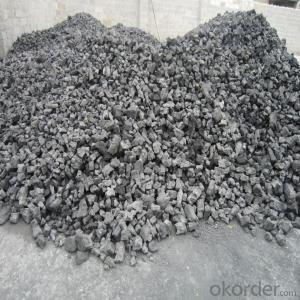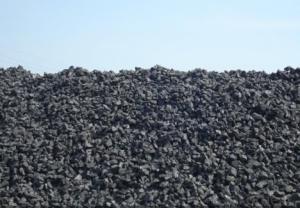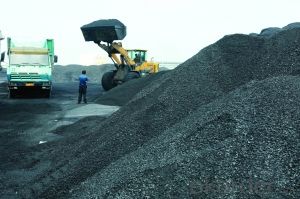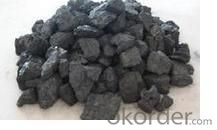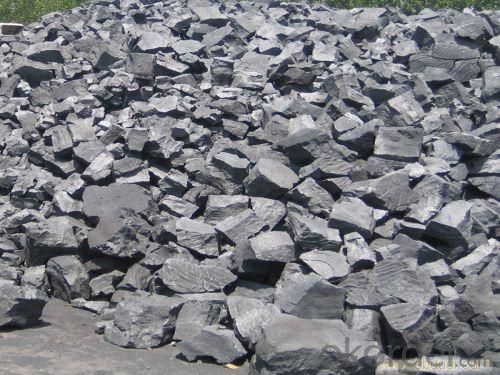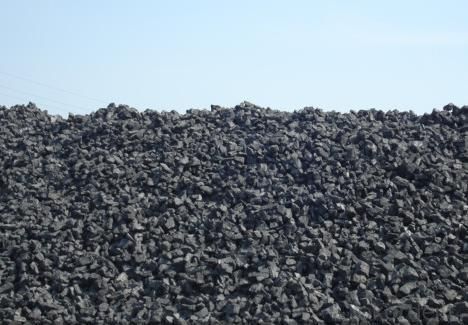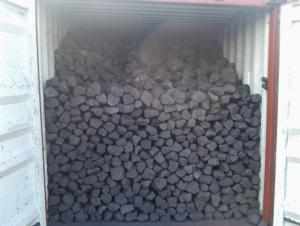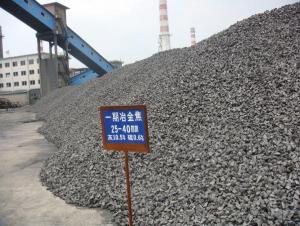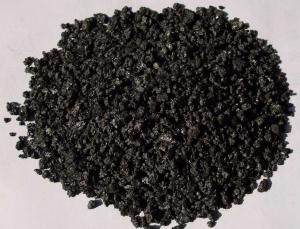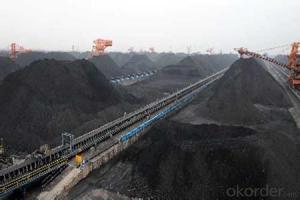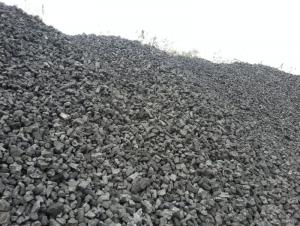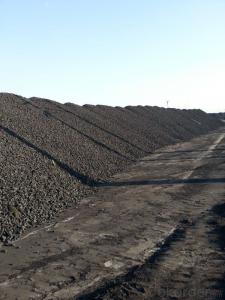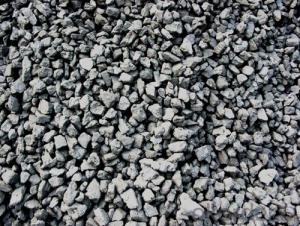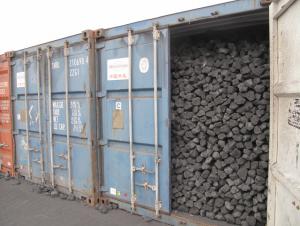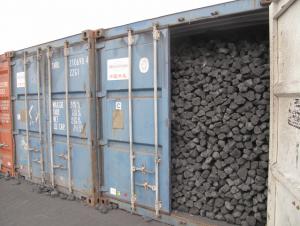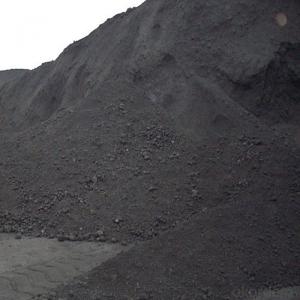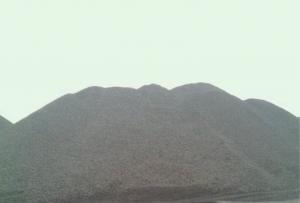Met Coke of 30 to 90 mm
- Loading Port:
- Tianjin
- Payment Terms:
- TT OR LC
- Min Order Qty:
- 100 m.t.
- Supply Capability:
- 3000 m.t./month
OKorder Service Pledge
OKorder Financial Service
You Might Also Like
1. Structure of Met Coke of 30 to 90 mm Description:
Coke is made by high temperature metallurgical coke for blast furnace smelting, casting and gasification. Occurring in the process of coking after recovery and purification of coke oven gas is a high calorific value of fuel, is an important industrial raw material in organic synthesis.
Currently found in the earliest coke in our country, is in Guangdong new will be a unearthed in the ancient ruins in the late 13th century, during the southern song dynasty period in our country. Thus concluded that China's song dynasty, have been used to coke ironmaking. Guangdong new will find coke is also found that the earliest in the world. In Europe, the UK in 1788 began with coke ironmaking, this is the earliest record of western countries, the more than 500 years later than our country.
To ensure the quality of coke, the choice is the most basic requirements of coking coal volatile matter, caking and coking properties; the vast majority of coking coal must go through washing, as much as possible to ensure low ash content, sulfur content and phosphorus content. When choosing a coking coal, but also must pay attention to the inflation pressure in the process of coal in coking. With low volatile coal coking, due to its colloid viscosity big, prone to high inflation pressure, harms the coke oven masonry, needs to be addressed by coal blending coking.
2. Main Features of the Met Coke of 30 to 90 mm:
• Quality assurance
• Mutual benefit
• Preferential price
• Various choice
3. Met Coke of 30 to 90 mm Images:
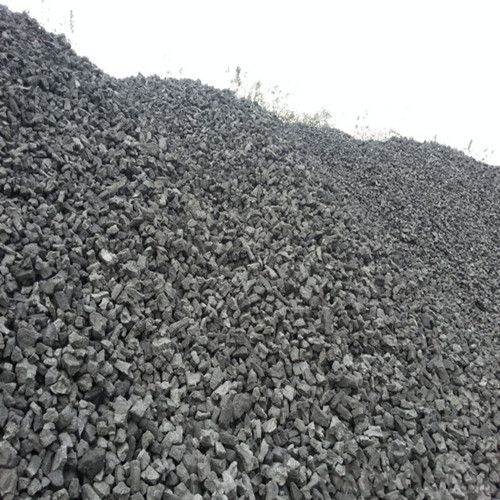
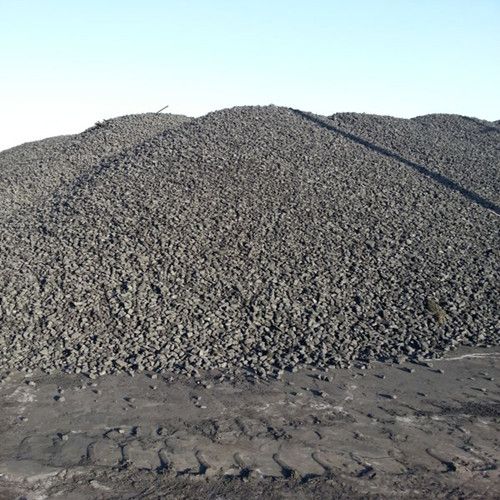
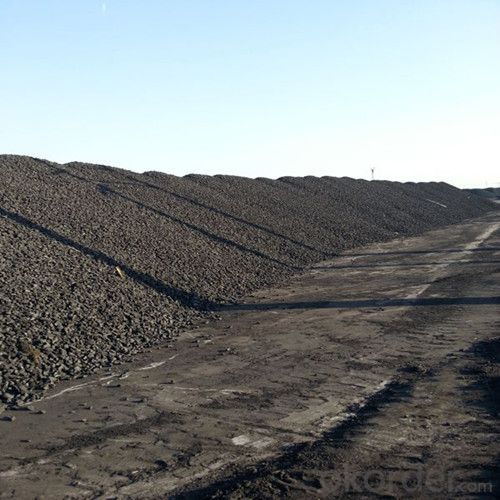

4. Met Coke of 30 to 90 mm Specification:
Parameters | Guarantee | Rejection |
Total Moisture (As received basis) | 5% max | |
Ash (dry basis) | 12.5% max | > 13.5% |
Volatile Matter (dry basis) | 1.5% max | > 1.8% |
Sulphur (dry basis) | 0.65% max | > 0.75% |
Phosphorus (dry basis) | 0.035% max | > 0.045% |
M10 | 7% max | > 9% |
M40 | 84% min | <82% |
CSR | 65% min | <63% |
CRI | 25% max | > 27% |
Size 30-90 mm | 90% min | |
+90 mm | 5% max | > 8% |
-30mm | 5% max | > 8% |
5. FAQ
We have organized several common questions for our clients,may help you sincerely:
1)Main type
Metallurgical coke is blast furnace coke, coke, iron alloy and nonferrous metal smelting with coke. As more than 90% of the metallurgical coke for blast furnace ironmaking, so often called the blast furnace coke metallurgical coke.
Foundry coke is dedicated to cupola molten iron. Coke is the main fuel of cupola molten iron. Its role is hot metal melting furnace charge and overheating, support stock column maintain its good air permeability. As a result, coke blocks should have large, low reactivity, low porosity, with sufficient impact crushing strength, ash content and low sulfur content.
2) Application of coke
• Used for blast furnace ironmaking and used for copper, lead, zinc, titanium, antimony, mercury
• Other non-ferrous metal smelting of blast furnace,
• Reducing agent, compound
• The function of stock column frame.
3) The history of coke
Our country's metallurgical industry has a long history, is the original fuel charcoal smelting industry, due to the charcoal burning temperature is lower, and short duration of fire and not easy to master hour, therefore, directly affect the level of smelting, to make the steel quality is not guaranteed. Later, people use coal as smelting, coal combustion temperature is higher, and the combustion duration is longer than charcoal, but easily broken after coal is heated in the oven, affect the burden of permeability, and high content of sulfur in coal, directly affect the quality of the cast iron. After a period of practice, it has been found that the coal after dry distillation (i.e., separated flame heating), volatile components may be removed, and the porosity increased, resembling charcoal, fire is better than that of coal, but also can avoid charcoal and coal. This after carbonization of coal is coke.
Currently found in the earliest coke in our country, is in Guangdong new will be a unearthed in the ancient ruins in the late 13th century, during the southern song dynasty period in our country. Thus concluded that China's song dynasty, have been used to coke ironmaking. Guangdong new will find coke is also found that the earliest in the world. In Europe, the UK in 1788 began with coke ironmaking, this is the earliest record of western countries, the more than 500 years later than our country.
- Q: The difference between coal and coke
- The semi coke production tend to low temperature carbonization, distillation temperature at 600 degrees Celsius, due to a late start, at present the low temperature carbonization furnace single furnace annual output of 30 thousand tons / year in most equipment under low temperature carbonization furnace forum of more than 50 thousand tons / year scale is still at the exploratory and experimental stage, technology of the large-scale equipment is still not mature, can only achieve centralized mass production using a combination of multi furnace technology. The use of coal field is quite widespread, especially in the carbonaceous reducing agent has unique properties, economic advantages are very obvious.
- Q: Coke is how to participate in the steel, and the pellets, sintering, a piece of the furnace in the furnace or in other containers
- . It is necessary to add coke, pellet, sinter ore, ore and other materials into the blast furnace according to a certain proportion, batch and order
- Q: The total amount of heat released by the fully burnt 200g coke is 60% by mass of 10kg water absorption [q coke =3.0 * 107J/kg, C water =4.2 * 103J/ (kg = C)], q:(1) how much heat is absorbed by water?(2) if the initial temperature of water is 10 degrees C, then, after absorbing heat, the temperature will rise to how much?
- (1) the amount of heat released from complete combustion of coke:Q put =mq=0.2kg * 3 * 107J/kg=6 * 106J.Heat absorbed by water:Q =Q * 106J suction ETA =6 * 60%=3.6 * 106J;(2) Q =cm t suction dreams,Dry water temperatures:Delta t=Q ceilingC water m water=3.6 x 106J4.2 x 103J/ (kg * c) * 10kgC = 85.7,
- Q: Effect of coal fineness on coke
- The fineness of pulverized coal, which is less than 3mm of grain size, has a great influence on the quality of coke. The fineness of coal is one of the indexes of coal blending quality. In the production, when determining the fineness of coal, we should consider two aspects of the quality uniformity and production operation.
- Q: How coal is turned into coke in the coking chamber
- In the furnace in the absence of air through the kiln wall edge ignition hole artificial ignition, coking coal will be stacked in the kiln fire, coking coal self combustion heat by layer coal heating (direct fire heating); a large amount of coal gas from coal combustion and unburned cracking formation hot air flow,
- Q: What is the phosphorus content in coke
- Coke obtained from high temperature coking for blast furnace smelting, casting and gasification. Coke oven gas produced in the process of coking and recovery is not only a high calorific value of fuel, but also an important industrial raw material for organic synthesis.
- Q: How many degrees of coke ignition temperature can ignite coke
- Ignition temperature (450-650) in air;Dry ash free base low calorific value is 30-32KJ/g;The specific surface area is 0.6-0.8m2/g
- Q: Distinction and distinction of cokeSoil coke, improved coke, coke machine coke do, what is the difference between
- The concept of coke:Bituminous coal in the absence of air is heated to 950-1050 DEG C, after drying, pyrolysis, melting, bonding, curing and contraction of the final stage of this process is made of coke, coking high temperature (high temperature carbonization). By high temperature coking coke for blast furnace smelting, casting and gas generated in the process of coking. After the recovery and after the purification of coke oven gas is not only a high calorific value of fuel, and is an important raw material for organic synthesis industry. Metallurgical coke is coke, coke, iron alloy coke and non-ferrous metal smelting coke for metallurgical coke collectively. More than 90% were used for blast furnace ironmaking blast furnace coke, so often referred to as metallurgical coke is coke. The special cupola molten iron and coke. Coke is the main fuel cupola molten iron. It is melting charge and molten steel overheating, the support column to maintain its good permeability. Therefore, coke should be Preparation of large blocks, low reactivity, porosity is small, with impact crushing strength, low ash and sulfur enough.
- Q: What are the criteria for coke classification and how to distinguish between primary and two grade coke?
- Quality index of cokeCoke is the solid product of high temperature carbonization, the main ingredient is carbon, is the pore structure has a crack and irregular (or pore porous). The crack number directly affects the coke strength and crushing strength, the index generally refers to the unit volume of the crack (crack number within the coke grain length). To measure the pore structure of the main indicators to measure with porosity (only coke pore volume accounted for percentage of the total volume) that it affects the coke reactivity and strength. The different uses of the coke porosity index for different requirements, the general metallurgical coke gas hole rate in 40 ~ 45%, foundry requirements in 35 ~ 40%, coke export requirements in 30%. Coke crack degree and the porosity level, and the coking coal has a direct relationship, such as coal based coke refining, crack, high porosity, low strength and coking coal as a base; Coke coal refining. Crack less, low porosity and high strength. The strength of coke is used to denote the crushing strength and abrasion resistance of two indicators. The coke crushing strength is that coke can resist foreign impact force without ability along cracks or defects at the broken table, shown by M40 wear; strength of coke coke refers to the ability to resist external friction without surface of glass forming debris or powder, by the M10 value. The effect of the crack of coke crushing strength, M40 value, M10 value and abrasion strength influence of coke pore structure. M40 and M10 were determined by lot. In China the migon drum test in Germany.
- Q: The two day of the fire is not wang you have a good way to have any good way. Such online
- Coke obtained from high temperature coking for blast furnace smelting, casting and gasification. Coke oven gas produced in the process of coking and recovery is not only a high calorific value of fuel, but also an important industrial raw material for organic synthesis.
Send your message to us
Met Coke of 30 to 90 mm
- Loading Port:
- Tianjin
- Payment Terms:
- TT OR LC
- Min Order Qty:
- 100 m.t.
- Supply Capability:
- 3000 m.t./month
OKorder Service Pledge
OKorder Financial Service
Similar products
Hot products
Hot Searches
Related keywords
